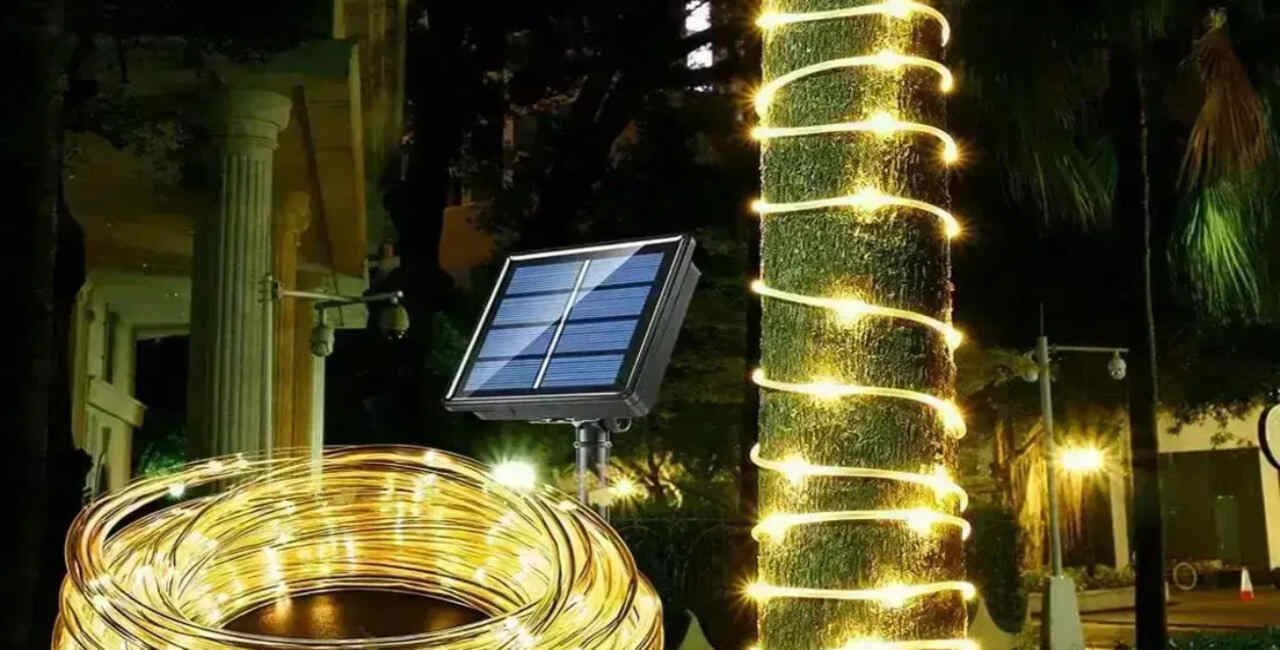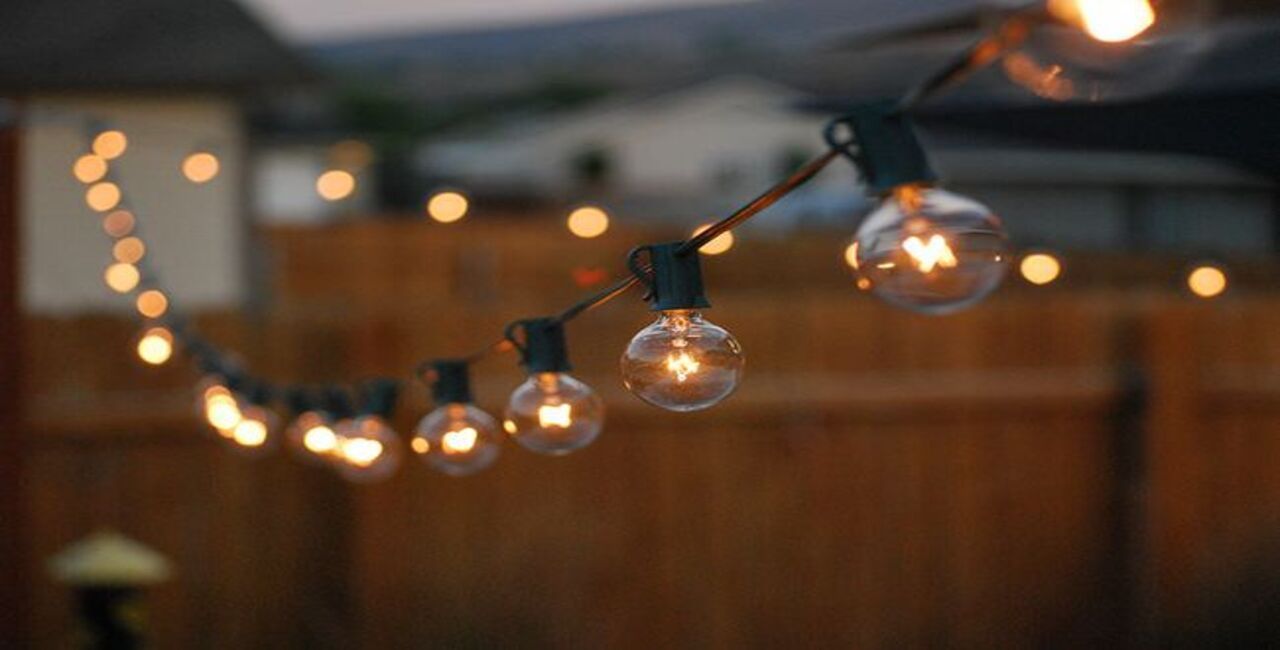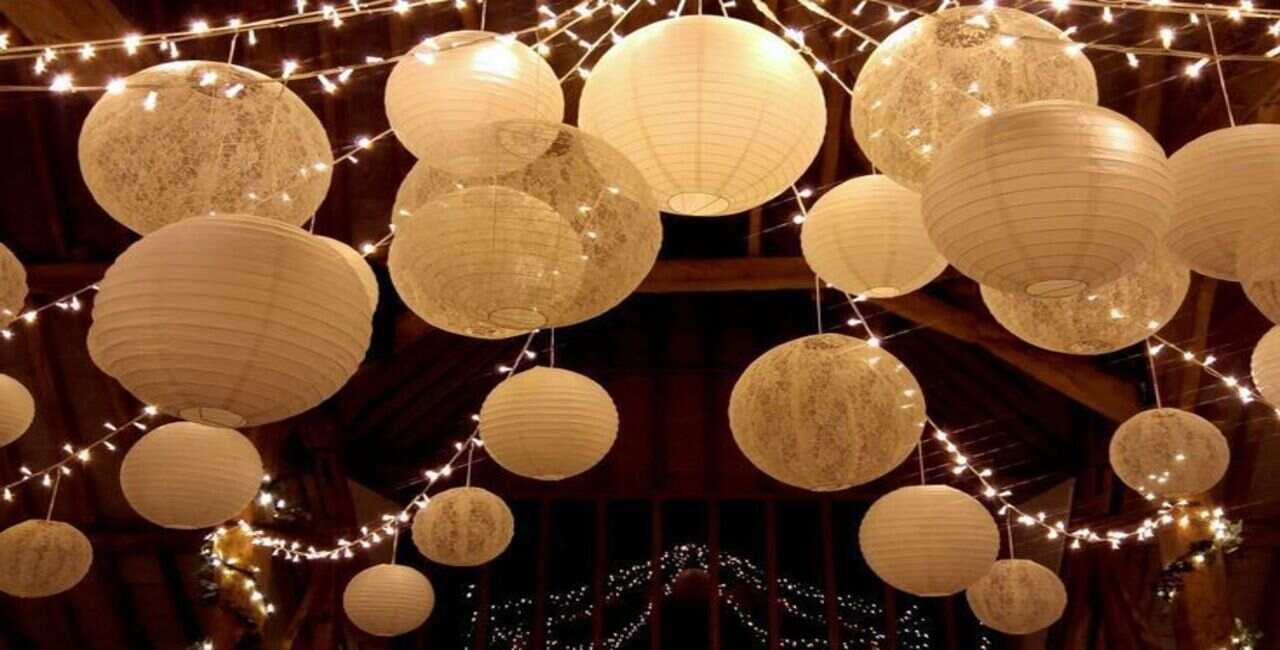How Well Do Solar String Lights Work?

In the enchanting realm of outdoor décor, where ambiance meets eco-consciousness, there's a star shining brightly: solar string lights. These whimsical strands of luminosity are not just your ordinary garden variety of lights; they're a beacon of sustainability in a world increasingly drawn to eco-friendly solutions.
Join us as we discover how solar string lights work, exploring their charm, functionality, and the eco-friendly ethos they bring to outdoor spaces. From garden soirées to cozy backyard retreats, these lights promise to transform any outdoor setting into a luminous wonderland powered by the sun.
So, grab your shades, and let's bask in the radiance of solar innovation as we get into the captivating world of solar string lights. Let's light up our nights while treading gently on the planet we call home.
How Do Solar String Lights Work?
- Components of Solar String Lights
Before we dive into the intricate workings of solar string lights, let's take a peek under the hood to understand their basic components. These charming illuminators consist of three main parts:
• LED Bulbs: The heart of the ensemble, LED bulbs provide the radiant glow that adorns your outdoor spaces. Known for their energy efficiency and longevity, LED bulbs are strung along a wire or string, creating a delightful cascade of light.
• Solar Panel: Acting as the power hub, the solar panel captures sunlight and converts it into electricity. Typically mounted on a stake or positioned in a sunny spot, the solar panel is equipped with photovoltaic cells that work their magic when exposed to sunlight.
• Rechargeable Battery: Like a trusty energy reservoir, the rechargeable battery stores solar-generated electricity when the sun sets. These batteries, often of the rechargeable NiMH (Nickel-Metal hydrogen) or Li-ion (Lithium-ion) variety, ensure that your solar string lights continue to shine long into the night.
2. Solar Panel Functionality
Now, let's shed some light on how the solar panel plays a crucial role in this solar-powered symphony. Here's a quick rundown:
• Sunlight Absorption: When exposed to sunlight, the solar panel's photovoltaic cells spring into action, absorbing the sun's rays.
• Electricity Generation: The excited electrons generate an electrical current, channeled through the wiring connected to the solar panel.
• Powering the LEDs: This generated electricity powers the LED bulbs, casting their radiant glow across your outdoor oasis.
3. Battery Storage and Charging
But what about when the sun bids adieu and darkness descends? Fear not, for the rechargeable battery steps up to the plate:
• Daytime Charging: During daylight hours, while the sun is shining bright, excess electricity generated by the solar panel is diverted to charge the rechargeable battery.
• Nighttime Illumination: As night falls and the solar panel bids farewell to daylight duties, the stored electricity in the battery takes center stage. This stored energy powers the LED bulbs, ensuring that your outdoor space remains aglow even without sunlight.
In essence, the solar panel and rechargeable battery form a dynamic duo, harnessing the sun's energy by day and illuminating your nights with eco-friendly radiance.
Factors Influencing the Performance of Solar String Lights

When it comes to the performance of solar string lights, several factors play an important role in determining their effectiveness in illuminating outdoor spaces. Firstly, the location and sunlight exposure of these lights are paramount. Placing them in areas with unobstructed access to sunlight ensures optimal charging potential for the solar panels.
Avoiding shading from trees, buildings, or other structures is essential to maximize sunlight absorption. Additionally, considering the duration of sunlight exposure throughout the day and adjusting the placement accordingly can help maintain consistent performance. Weather conditions also significantly impact the functionality of solar string lights.
Overcast days can reduce charging efficiency, while rain and moisture can affect the durability of the lights if they're not weather-resistant. Extreme temperatures may also affect battery performance, underscoring the importance of selecting lights with temperature-resistant batteries. Finally, the quality of solar panels and batteries is critical.
High-quality components ensure efficient energy conversion and longer-lasting illumination. Durability and construction are equally important, as sturdy materials and weatherproof design contribute to reliable performance over time.
By taking these factors into account and investing in quality solar string lights, you can create a captivating outdoor ambiance powered by the sun's renewable energy, ensuring enchanting evenings for years to come.
Pros and Cons of Solar String Lights
In the quest for sustainable and enchanting outdoor lighting solutions, solar string lights have emerged as a popular choice for eco-conscious homeowners. However, like any technology, they come with their own set of advantages and disadvantages. Let's illuminate the pros and cons of these captivating lights:
Advantages
- Energy Efficiency: Solar string lights are champions of energy efficiency. By harnessing sunlight and converting it into electricity, they offer a green alternative to traditional lighting systems. This not only reduces energy bills but also lessens dependence on non-renewable energy sources, contributing to a healthier planet.
- Cost-Effective: Once you've made the initial investment, solar string lights shine bright without adding a penny to your electricity bill. Unlike conventional lights that require ongoing power and maintenance costs, solar lights offer long-term savings and a guilt-free glow.
- Environmentally Friendly: With solar power at its core, these lights are a boon for the environment. By utilizing clean, renewable energy, they help reduce carbon emissions and mitigate the impacts of climate change. Choosing solar string lights is not just a lighting decision; it's a step towards a greener future.
Disadvantages
- Limited Runtime: While solar string lights are a beacon of efficiency, they do have their limitations. The runtime of these lights is determined by factors like sunlight exposure and battery capacity. During cloudy days or extended nighttime hours, their illumination may be dimmed by the lack of sunlight.
- Dependence on Sunlight: Ah, the catch-22 of solar power – it's only as reliable as the sun itself. Solar string lights depend entirely on sunlight for charging, which means they may not shine as brightly on overcast days or in shaded areas. This reliance on sunlight can be a drawback, especially in regions with unpredictable weather patterns.
Tips for Enhancing the Performance of Solar String Lights

Eager to make the most out of your solar string lights and illuminate your outdoor space with brilliance? Here are some expert tips to enhance their performance and extend their enchanting glow:
Optimal Placement: Place the solar panel in an area with maximum sunlight exposure throughout the day. Avoid shading from trees or buildings, as this can obstruct sunlight and hinder charging efficiency. Positioning the panel facing south is ideal for capturing the sun's rays effectively.
Regular Cleaning: Keep the solar panel clean and free from dust, dirt, and debris to ensure optimal sunlight absorption. Periodically wipe the panel with a soft cloth and mild detergent to maintain its efficiency and maximize charging capacity.
Adjustable Panel Angle: Many solar panels are adjustable, allowing you to tilt them to optimize sunlight exposure. Experiment with different angles to find the optimal position that maximizes charging efficiency, especially during the winter months when the sun sits lower in the sky.
Weatherproofing: Ensure that your solar string lights are weatherproof and designed to withstand outdoor elements. Invest in lights with durable construction and waterproof seals to protect them from rain, snow, and moisture, prolonging their lifespan and performance.
Battery Maintenance: Periodically check the rechargeable batteries for signs of wear and tear and replace them as needed to maintain optimal performance. Keep the battery compartment clean and free from corrosion, and store them in a cool, dry place during periods of non-use.
Conclusion
As we draw the curtain on our exploration of solar string lights, let's take a moment to recap the key points and glimpse into the future of this innovative lighting solution.
Throughout our journey, we've highlighted the key benefits of solar string lights. From their ability to reduce energy bills to their enchanting ambiance, these lights have proven to be a versatile addition to any outdoor space. Moreover, with proper placement and maintenance, their performance can be optimized, ensuring long-lasting illumination for countless evenings under the stars.
Looking ahead, the future of solar string lights is promising. Continued advancements in solar technology are expected to enhance their efficiency and performance, making them even more reliable and sustainable. Furthermore, innovations in design and integration with smart technology will offer users greater customization and convenience, further solidifying their place as a lighting solution of choice.
As we move forward, let's embrace the magic of solar string lights and the promise they hold for a brighter, greener tomorrow. By incorporating these lights into our outdoor spaces, we not only illuminate our surroundings but also make a conscious choice to reduce our carbon footprint and protect the planet we call home. Together, let's light up the night sky and pave the way towards a more sustainable future.

